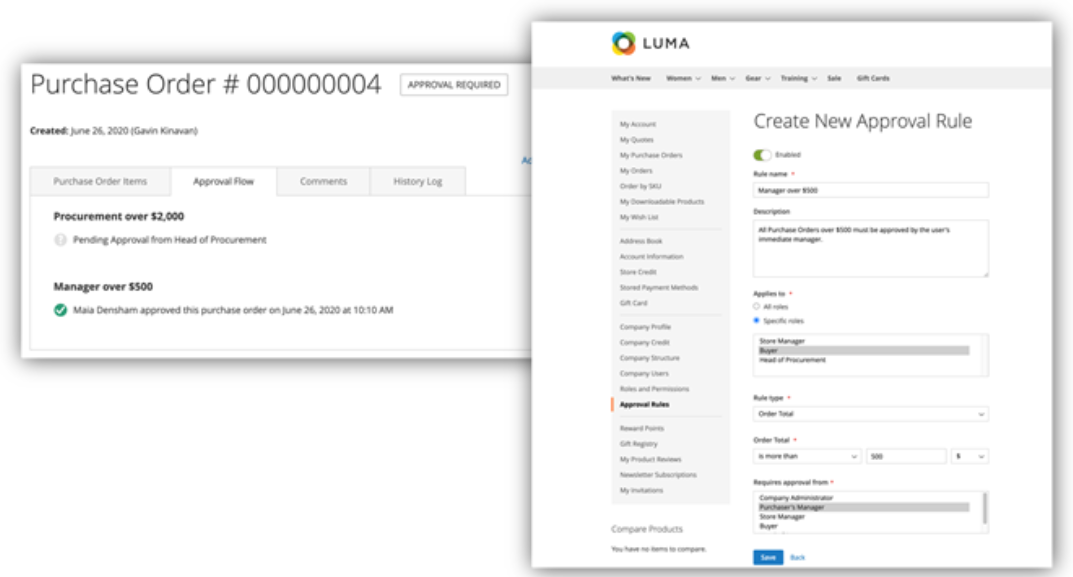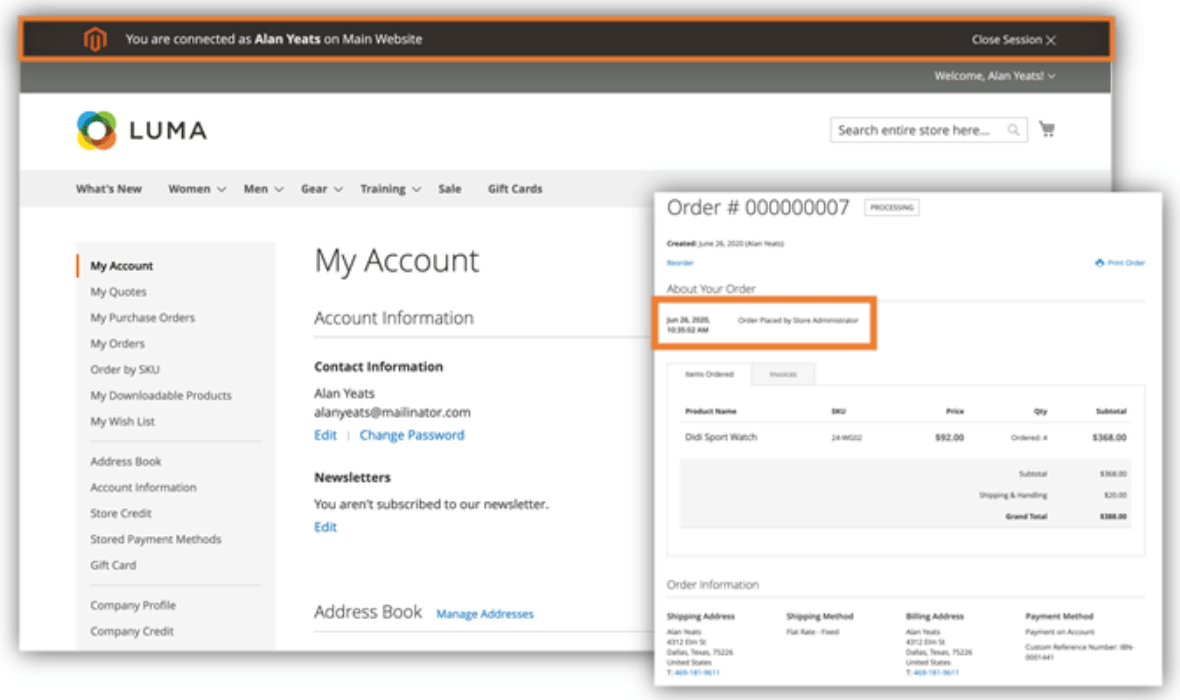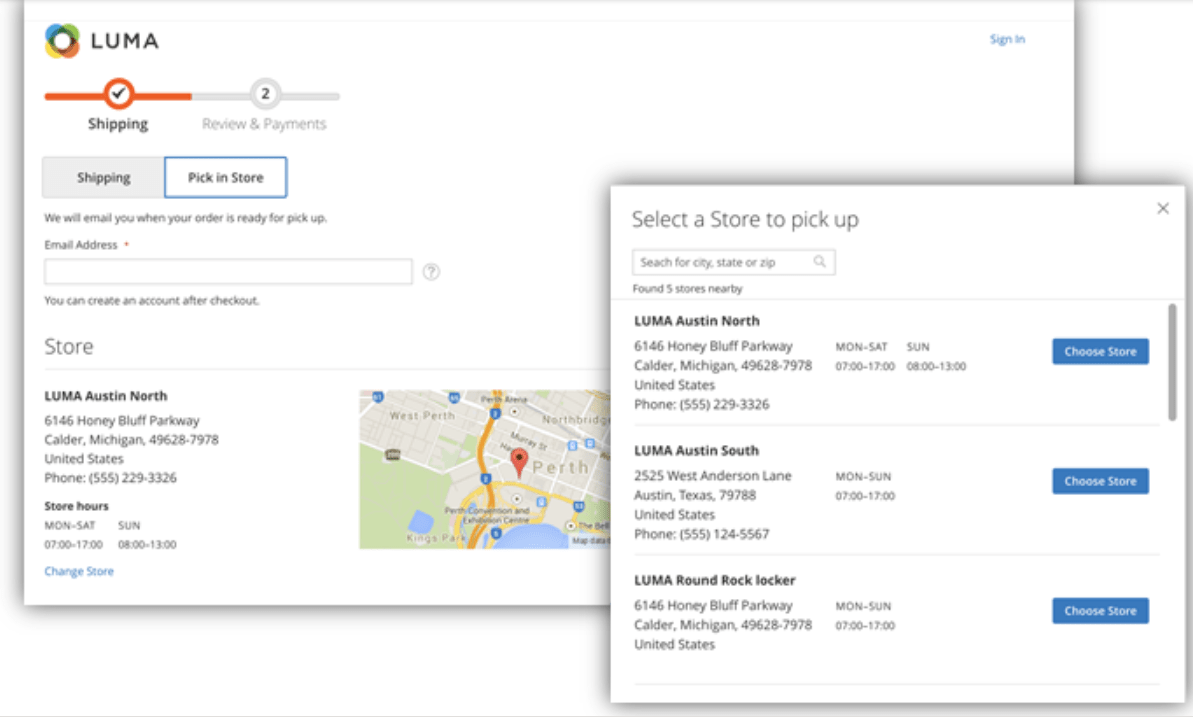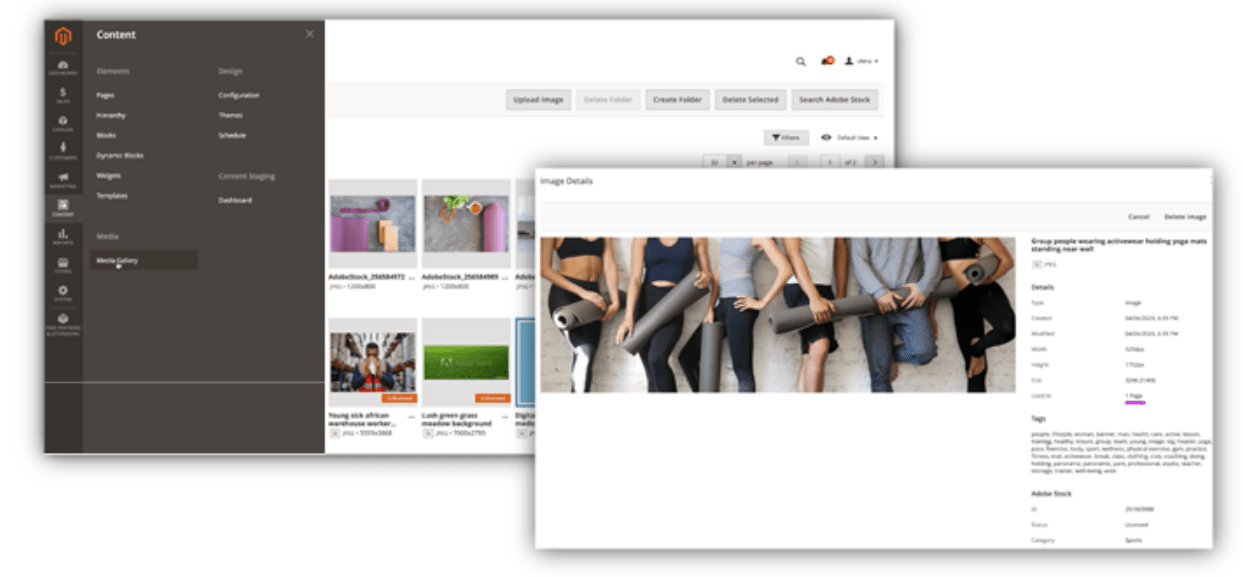As we watched the commerce landscape rapidly shift at the beginning of the COVID-19 pandemic, there was an expectation that we would see an unprecedented acceleration of digital transformation initiatives. Recent research from McKinsey shows that 96% of surveyed B2B businesses have, in fact, changed their sales model to favor online and eCommerce-based selling. On average, this shift has proved fruitful, with 65% that say the new sales model is as effective or more so than what they were doing before COVID-19, and 80% are very likely or somewhat likely to sustain the shifts.
The migration in shopper behavior to digital commerce has also been persistent, as shown by the Adobe Digital Economy Index (DEI). Since April, eCommerce shopping has consistently tracked above the shopping levels seen during the 2019 holiday season. June alone drove $73.2 billion in online spend, up 76.2% year over year (YoY).
Today, Adobe has released the latest version of Magento Commerce and Magento Open Source to provide merchants with capabilities that will help them capture new opportunities in the current commerce landscape and prepare for the future.
Purchase Approval Workflows
To quickly ramp up B2B commerce sales, businesses need to support their customers’ varying purchasing policies and requirements. New approval workflow functionality included in Magento 2.4 enables B2B buying companies to customize their approval processes using a simple form. They can define approval rules based on order value, number of SKUs, or shipping costs. Rules can specify multiple approvers and be assigned to specific roles. For example, a company might require any purchase over $5,000 made by a junior buyer to be approved by the purchaser’s manager before it is submitted.
The approval process is also designed for efficiency; approvers are automatically notified when reviews are required and can easily approve, reject, or comment on a purchase order in their accounts. Buyers also have complete transparency and receive notifications at each stage of the purchasing process.

Streamline B2B purchasing with Approval Workflows
With self-service approval workflows, B2B sellers can deliver fast, convenient online ordering, while ensuring traditional spending controls are in place – a perfect combination to attract new business and grow online sales.
As we continue to advance Magento’s B2B capabilities, we’re excited to share that Magento Commerce was recognized as a top vendor in the Paradigm B2B Midmarket Combine report. Of the 16 vendors that were evaluated for their B2B eCommerce offering in the midmarket segment, Adobe was the only one to receive medals in all 10 evaluation categories for its roadmap, data-driven reporting and analytics capabilities and broad partner ecosystem. For more information, download the full report here.
Seller-Assisted Shopping
To smooth the transition to digital commerce, B2B companies must be able to guide and assist their customers as they utilize new online purchasing and account management capabilities. New Seller Assisted Shopping functionality empowers merchants to improve customer engagement and deliver exceptional service by allowing sales or customer service reps to log into their websites as the customer from the Magento Admin. Having access to the buyer’s experience enables the rep to support them in multiple ways:
• Troubleshoot any part of the buying process – for example, help the customer find a product, show them how to set up a wishlist or requisition list, or address something that doesn’t work as expected.
• Walk the customer through custom functionality that may only be available in the storefront experience, such as a product configurator.
• Save the customer time by creating orders and quotes on their behalf or handling administrative tasks, such as adding buyers and setting up approval rules.

Deliver exceptional customer service with Seller-Assisted Shopping
In-Store Pickup
Since March, the Adobe DEI has tracked a sustained spike in buy online, pick-up in store (BOPIS) orders, maintaining YoY growth of 130% in June. As local restrictions on businesses loosen, implementing BOPIS fulfillment options can bring significant value back to physical locations, encouraging shoppers to return to your store and increasing average order values. In fact, Business Insider found that 85% of shoppers say they’ve made an additional in-store purchase while picking up an online order.
With In-Store Pick Up in Inventory Management (formerly Multi-Source Inventory, or MSI), merchants can easily select which physical inventory locations are eligible as a customer pickup location. During checkout, customers can quickly find a location near them and view other essential information, such as store hours. Once orders have been placed, store associates can notify them when their orders are ready for pickup with a single click. Furthermore, this can be adapted for curbside pickup, which has become the preferred way for many shoppers to pick up their purchases and minimize health risks. These advances are available in both Magento Commerce and Magento Open Source versions.

Give shoppers new fulfillment options and bring value back to physical locations with in-store pickup
Asset Management in the New Media Gallery
With all of these new shoppers online, merchants need to quickly communicate their value and stand out from the crowd. Creating a content-driven experience that will engage these visitors – and keeping that content fresh – can be time-consuming. The latest version of Magento Commerce and Magento Open Source streamlines your creative workflow with a completely rebuilt Media Gallery that performs up to 30 times faster and strengthens our integration with Adobe Stock.
This completely rebuilt Media Gallery reinvents asset management, saving significant time and resources for creative stakeholders.
• Easily manage images used throughout your site with new image details that include how often and where an image is used across pages, categories, or products.
• Search and filter images more quickly with new image attributes, including tags uploaded from Adobe Stock and licensing status.
• Save time with an updated Adobe Stock integration that moves the image licensing and management workflow completely into the Media Gallery.

Save time and resources with over 10x faster performance and streamlined asset management
Making Headless and PWA Development Faster and Easier
When the Forrester Wave: B2C and B2B Commerce Suite reports came out in May – naming Adobe a Leader in both – one of the callouts was that “PWA Studio is positioned to lower the cost and complexity of adopting Progressive Web App (PWA) experiences.” This was great validation of our approach and the direction we’re taking with PWA development.
Concurrently, with Magento 2.4, we have released the latest version of PWA Studio for Magento Commerce and Magento Open Source, which introduces new Venia storefront experiences built using Page Builder content types, and a complete cart and checkout workflow to accelerate implementations. We’re also introducing an extensibility framework to make it easier to customize and extend the capabilities of PWA Studio, both through custom development and apps in the Magento Marketplace.
As merchants, partners, and developers accelerate their adoption of PWA Studio, we are continuing to make it faster, easier, and more cost effective to launch PWA storefronts with Magento Commerce and Magento Open Source. We also continue to expand our support for headless commerce. Venia UI components can be used with Adobe Experience Manager-powered storefronts to enable commerce in personalized customer journeys, while greater coverage of GraphQL APIs empowers merchants to build custom experiences for all digital touchpoints using their preferred front-end development tool.

Platform Security, Quality, and Performance
Among all these changes in shopper behavior and merchant needs, some things remain the same. Shoppers continue to expect – and merchants continue to prioritize – an experience that is secure, fast, and reliable. The release of Magento 2.4 includes several enhancements to platform quality, security, and performance. Highlights include:
• Starting with 2.4, we are securing the Admin portal by requiring tw-factor authentication (2FA) for all users. Learn more about implementing 2FA throughout Magento.
• The core Braintree integration has been migrated to a Vendor Bundled Extension, allowing the delivery of more frequent updates and enabling new capabilities, including support for Venmo, Apple Pay, and Google Pay. See the full list of capabilities in the Magento Marketplace.
• Scalability improvements include Redis optimizations that allow merchants to serve a higher amount of traffic without performance degradation and pages that load up to 43% faster at high traffic volumes.
• Faster cart and checkout performance, such as 50% faster reordering and 30% faster add-to-cart performance during quick ordering.
• The new Composer Update Plugin that automates several previously manual upgrade steps, making the process easier and safer.
• Updated tech stack components ensure long-term compliance and security while unlocking additional performance improvements.
Join us for a special webinar on Thursday, September 17, 2020, to learn more about this release and how we are helping merchants adapt to the current commerce landscape with Magento 2.4. Be sure to also review the release notes and visit our Security Bulletins to learn more about the features and security updates that are included in these new versions.




![Outsell Your Biggest Competitors with these eCommerce Trends [2021]](https://technobabble.com.au/thegatewaynetau/wp-content/uploads/sites/11/2021/02/outsell-your-biggest-competitors-with-these-ecommerce-trends-2021.gif)